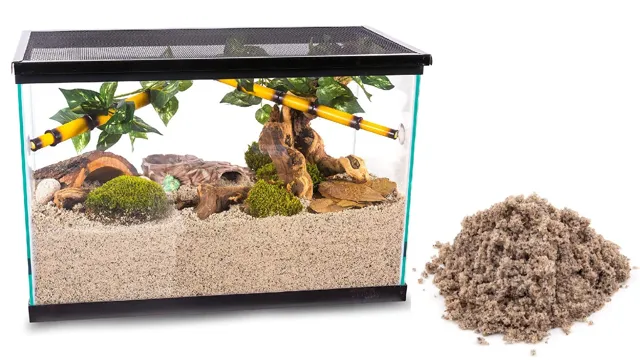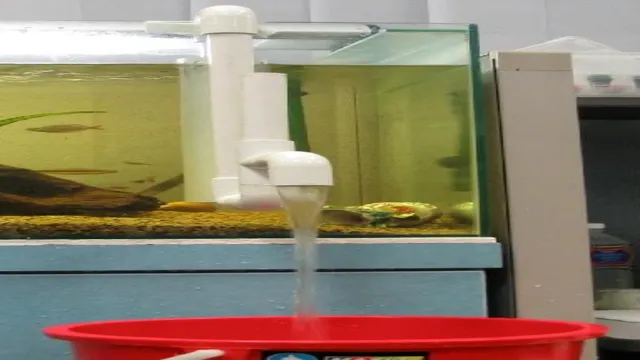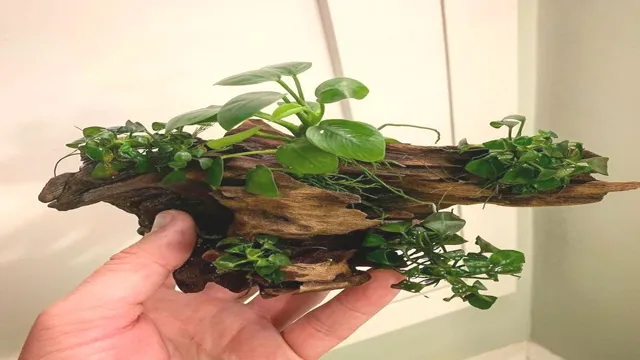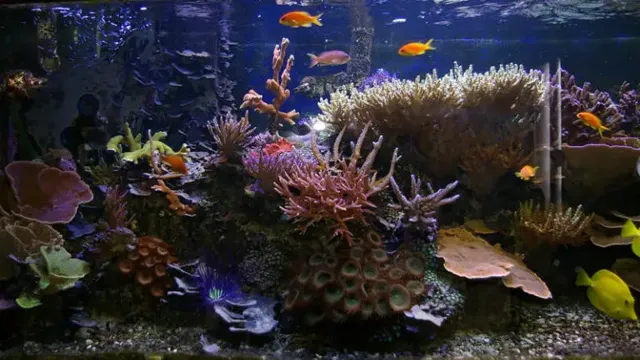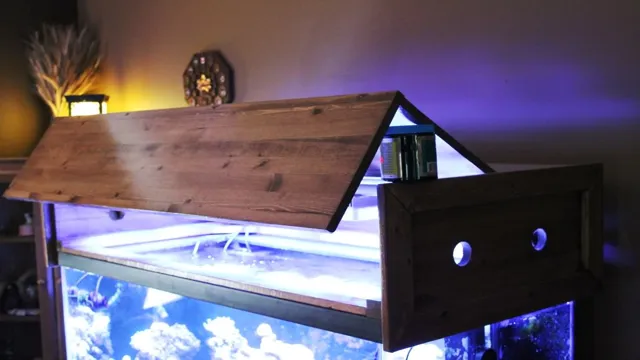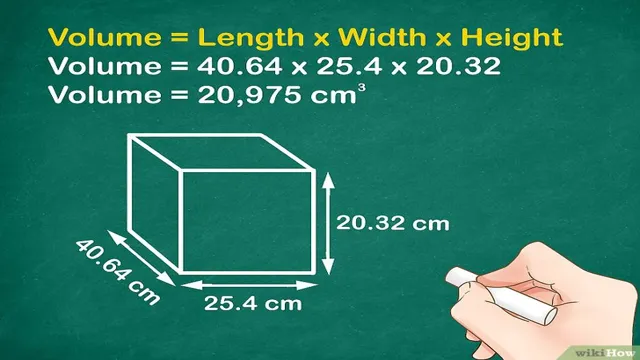Aquarium sand capping is an essential technique that every aquarist should know. It involves covering the substrate layer of your aquarium with a layer of sand. This technique helps to prevent the substrate from mixing with the water and keeps it in place, preventing erosion and improving the overall look of your aquarium.
But, how do you go about sand capping your aquarium? What are the best methods to achieve this? In this post, we will show you how to aquarium sand cap and everything you need to know to get started on your next aquarium project. So, grab your gloves and let’s dive in!
Introduction
If you’re new to the aquarium hobby, you may be wondering how to properly cap your substrate with sand. A sand cap provides a decorative layer over your aquarium’s substrate while also preventing the release of unwanted particles into the water column. To get started, first, rinse your sand thoroughly to remove any debris or unwanted particles.
Once it’s clean, carefully pour the sand into your aquarium, aiming for an even layer of one to two inches in depth. When you’re satisfied with the sand’s placement, use a siphon to carefully remove any excess dirt or debris from the substrate layer. Finally, add water to your aquarium and watch as your sand cap creates an aesthetically pleasing new look for your aquatic environment.
With a little practice, you’ll be capping your aquarium substrate like a pro and enjoying a stunning aquatic display for years to come.
What is sand capping?
Sand capping is a process of depositing sand on the top layer of soil in order to improve the quality of the soil underneath. It is usually done in areas that are contaminated with harmful substances like heavy metals and are deemed to be unfit for vegetation. This technique has been used for many years in soil remediation projects around the world.
The sand that is laid on top of the soil acts as a barrier that prevents the harmful substances from seeping further down into the ground. It also allows for better water retention and nutrient absorption, which promotes healthy plant growth. Sand capping is an effective and cost-efficient way to remediate contaminated sites, and it has become a popular choice for restoration projects in recent years.

Why sand cap your aquarium?
If you’re a fish lover and you have an aquarium that houses a variety of aquatic life, you might have heard of sand capping. But what is it exactly and why should you do it? Sand capping is the process of laying a layer of sand on top of the substrate in your aquarium. The main objective of this process is to create a buffer between the substrate and the water column, which can control the release of nutrients into the water.
This means that you can keep your nitrate and phosphate levels in check, which is essential for a healthy aquarium. Additionally, sand capping can help with the growth of certain plants and can enhance the overall aesthetics of the tank. So, if you want to maintain a stable and healthy aquatic environment, sand capping might be something you should consider.
Choosing Your Sand
If you’re thinking about setting up an aquarium, one important thing you need to consider is the type of sand you use. There are many different options to choose from, such as live sand, aragonite sand, or silica sand. Each type has its own benefits and drawbacks, so it’s important to do your research and choose carefully.
One popular method for setting up a reef aquarium is to use a sand cap, which involves placing a layer of live sand on top of a layer of dry sand. This can help promote the growth of beneficial bacteria and create a more natural environment for your fish and other aquatic creatures. Whatever type of sand you choose, be sure to rinse it thoroughly before adding it to your tank to remove any debris or contaminants.
Type of Sand
When it comes to choosing sand for a project, there are a few different types to consider. The most common types of sand include concrete sand, play sand, and masonry sand. Concrete sand is typically used for mixing with cement and creating strong foundations for buildings or structures.
Play sand, on the other hand, is perfect for children’s sandboxes, as it’s fine and soft to the touch. Masonry sand is ideal for filling in the gaps between bricks or pavers, as it’s finely screened and has a uniform texture. It’s important to choose the right type of sand for your specific project, as using the wrong type can lead to issues in the future.
Additionally, be sure to properly store your sand to prevent any moisture buildup or contamination. By choosing the right type of sand and taking care of it properly, you can ensure a successful and long-lasting project.
How Much Sand do You Need?
When it comes to choosing the right sand for your project, there are a few factors to consider. First, you’ll want to determine the purpose of the sand. A play area may require a different type of sand than a construction project. (See Also: How to Fill Aquarium with Water: A Step-by-Step Guide for Beginners)
Next, consider the grain size and texture of the sand. Finer sand is better suited for construction and masonry work while coarser sand works well for landscaping and drainage projects. Another key factor to consider is the color – do you want a natural tan or a more vibrant color? Once you’ve determined these factors, you can calculate how much sand you’ll need based on the area you need to cover and the depth you desire.
Keep in mind that using too much sand can be just as problematic as not using enough – always consult a professional if you’re unsure. By carefully choosing the right sand and calculating the necessary amount, your project is sure to come out looking great.
Preparing Your Aquarium
Are you getting ready to set up your aquarium? If so, you may be wondering how to properly cap your sand substrate. Sand caps are an essential aspect of any aquarium set up as they provide a smooth and stable surface for your aquatic plants to grow. In addition, sand caps are also necessary for fish that burrow and root around in the substrate.
The process for creating a sand cap is straightforward. After laying down your base substrate, typically a nutrient-rich planting soil, you will want to add a layer of sand to the top. The amount of sand you need will depend on the size of your aquarium, but a good rule of thumb is to add about two inches of sand.
Once the sand is in place, use your hands or a smooth object to level out the surface of the substrate. With its ability to hold nutrients and provide a stable environment for your aquatic life, a sand cap is an essential component of any successful aquarium.
Clean the Aquarium Glass
Keeping your fish tank clean is important for the health and happiness of your aquatic pets. One essential task in preparing your aquarium is to clean the glass. Over time, algae and other debris can build up on the inside of your tank, obstructing your view of your fish and plants.
All you need is a glass cleaner designed for use in aquariums and a clean cloth or sponge. Simply apply the cleaner to the cloth or sponge and wipe the inside of the glass in circular motions, being careful not to scratch the surface. Repeat until the glass is completely clean.
Once you have thoroughly cleaned your aquarium glass, you can fill it with fresh water and begin the process of creating a cozy and comfortable home for your fish. With a little care and attention, your aquarium will be a beautiful and healthy addition to your home.
Add Fertilizers and Soil
When preparing your aquarium, it’s important to consider fertilizers and soil. Adding fertilizers can help promote healthy plant growth while also enriching the overall ecosystem of the tank. When choosing fertilizers, it’s important to select ones that are formulated for aquatic plants, as these will provide the necessary nutrients in the correct ratios.
Additionally, adding a nutrient-rich soil substrate can also help promote plant growth and provide a natural environment for aquatic life. Be sure to thoroughly rinse the soil before adding it to the tank, as this can help remove any unwanted debris or contaminants. By providing your aquarium with the necessary fertilizers and soil, you can create a thriving ecosystem that will provide a beautiful and natural environment for your aquatic pets.
Add a Layer of Mesh (Optional)
If you’re looking to create a thriving aquatic ecosystem in your aquarium, adding a layer of mesh can be a helpful step. This optional addition can help to promote the growth of beneficial bacteria, which play a vital role in maintaining the health of your aquarium. The mesh provides a surface area for these bacteria to grow and colonize, which helps to break down waste and other harmful substances in the water.
Additionally, the mesh can also serve as a barrier between the substrate and the water, which can help to prevent any debris or contaminants from settling on the bottom of the tank. When selecting a mesh, be sure to choose a material that is aquarium-safe and easy to clean, such as nylon or stainless steel. By considering every detail of your aquarium setup, you can help to ensure that your aquatic plants and animals thrive in their new home.
Sand Capping Your Aquarium
When it comes to setting up an aquarium, sand capping is an important step to remember. Sand capping involves adding a layer of sand on top of the substrate already present in your tank. This is done to help prevent the release of harmful materials and to keep the tank clean and healthy.
To start, you’ll want to measure the size of your tank and the depth of your current substrate. Next, purchase a layer of sand that is about 1-2 inches thick. Spread the sand over the substrate until it covers the entire bottom of the tank.
Finally, use a smooth object to level out the sand and make it flat. Your tank is now ready to be filled with water. Remember, sand capping can be an important step to ensure the health and safety of your aquatic pets, and it’s important to do it correctly to avoid any problems down the road. (See Also: How to Glue Acrylic for Aquarium: A Step-by-Step Guide for Perfect Bonding)
Adding the Sand
When it comes to setting up your aquarium, adding sand is a crucial step in recreating a natural environment for your fish and aquatic plants. Sand capping refers to adding a layer of sand on top of the substrate to create a smooth and even base. This layer of sand helps to prevent any excess nutrients or gases from building up and causing problems in your aquarium.
It also provides a natural-looking substrate for your plants to root in and adds visual appeal to your aquarium. When adding sand, it’s important to rinse it thoroughly to remove any dust or debris that may have accumulated during transport. Once added, the sand should be evenly spread across the bottom of your aquarium, creating a level surface for your plants and fish to thrive upon.
Remember to choose a sand that is specific to aquarium use, as some types of sand may contain harmful chemicals or minerals that can harm your aquatic life. By using the right sand and following the proper steps for sand capping, you can create a beautiful and healthy aquatic environment for your fish and plants to thrive in.
Leveling the sand
Sand capping your aquarium is an important step towards creating a healthy and well-maintained environment for your fishes. It involves adding a layer of sand on top of the substrate that acts as a barrier, preventing anaerobic bacteria from producing harmful gases and toxins. To start, you’ll need to thoroughly clean the aquarium and remove any debris or unwanted items.
Once you’ve done that, add about an inch of soil or substrate to the bottom of the aquarium and gently even it out. Then, add another inch of fine sand on top of the substrate, making sure it’s spread evenly and doesn’t form any pockets or high spots. Finally, you can use a water siphon to add water to the aquarium slowly, making sure not to disturb the sand.
Overall, sand capping your aquarium will help you create a healthy environment for your fishes, and it’s an easy step that won’t take much time or effort.
Adding water gently
Sand capping your aquarium can provide numerous benefits, such as creating a natural look and promoting plant growth. However, before adding sand to your aquarium, it’s important to add water gently to avoid disturbing the substrate. When adding water, pour it slowly and gently over a plate or saucer placed on top of the substrate.
This will help prevent the sand from shifting and clouding the water. It’s also important to add enough water to cover the substrate completely before planting or adding any other decorations. By adding water slowly and gently, you can ensure that your sand capping project is successful and that your aquarium remains clear and healthy.
Maintaining the Sand Cap
Maintaining the sand cap in your aquarium is crucial to keep the substrate clean and healthy for your aquatic pets. After setting up the sand cap, ensure to regularly maintain it by removing any debris, uneaten food, and dead plants from the surface. You can use a turkey baster or a gravel vacuum to suction out the dirt and maintain a clean sand cap.
Avoid disturbing the sand cap too much and keep a consistent water flow to prevent the sand from getting airborne. Additionally, you can add some beneficial bacteria to your sand cap to help reduce waste buildup and prevent bad odors. Lastly, you can consider adding some live plants to your sand cap to help absorb any excess nutrients and keep your aquarium healthy.
By following these simple steps, you can keep a healthy and clean sand cap in your aquarium, ensuring a comfortable and safe environment for your aquatic pets.
Keep the Sand Layer at 1-2 inches
To maintain the health and longevity of your aquarium, it is important to pay attention to the sand cap layer. Ideally, you want to keep the sand layer at a depth of 1-2 inches, as this provides the perfect balance of filtration and oxygenation for the tank. It can be tempting to add more sand, thinking it will give the tank a more natural look, but too much sand can actually harm the fish and plants by trapping toxic gases and preventing oxygenation.
Conversely, having too little sand can lead to uneven distribution of nutrients and make cleaning your tank more difficult. By keeping the sand cap at the recommended depth, you can ensure that your aquarium will be a thriving and beautiful environment for all its inhabitants.
Vacuum the Sand Cap Regularly
Maintaining the sand cap in your aquarium is an essential task that shouldn’t be overlooked. And one of the critical aspects of maintenance is regularly vacuuming the sand cap. A sand cap is the layer of sand or gravel on top of your aquarium substrate that keeps everything in place. (See Also: How to Draw Fish Aquarium Easy: Simple Steps to Creating a Beautiful Underwater World)
Over time, debris, uneaten food, and waste can settle on top of your sand cap, forming a layer that needs to be removed. This is where a good quality gravel vacuum comes in handy. By using a vacuum to clean the sand cap area, you can easily remove any debris or waste and keep your aquarium clean.
Be sure to do this regularly, at least once a week, to prevent any buildup. Remember, a clean aquarium means happy and healthy fish! So, make sure to maintain your sand cap for an optimal aquatic environment.
Conclusion
In conclusion, capping your aquarium with sand may seem like a daunting task, but it’s quite simple if you follow these easy steps. Think of it like frosting a cake – you want to create a beautiful and smooth layer on top, but it’s what’s underneath that really holds everything together. With a sand cap, you’ll not only enhance the aesthetic appeal of your aquarium, but you’ll also provide a foundation for healthy plant growth and a thriving aquatic ecosystem.
So go ahead and give it a try, your fish will thank you!”
FAQs
What is a sand cap in aquariums?
A sand cap in aquariums refers to an additional layer of fine-grained sand that is added on top of a substrate layer to create a smooth and visually appealing look.
How do you create a sand cap in an aquarium?
To create a sand cap in an aquarium, you first need to lay down a layer of nutrient-rich substrate. Next, add a layer of fine-grained sand on top of the substrate, about 1-2 inches in depth.
What is the purpose of a sand cap in an aquarium?
The purpose of a sand cap in an aquarium is to create a more attractive and visually appealing look. It also prevents essential nutrients from leaching into the water column and helps retain moisture in the substrate.
What type of sand is best for a sand cap in an aquarium?
The best type of sand for a sand cap in an aquarium is a fine-grained, natural sand that is pH neutral and free from impurities. Avoid using sand that is too coarse or contains sharp edges.
How often should you maintain a sand cap in an aquarium?
It is recommended to maintain a sand cap in an aquarium every six months. This involves removing the top layer of sand and substrate and adding a fresh layer of sand on top.
What are the benefits of a sand cap in a planted aquarium?
In a planted aquarium, a sand cap ensures that essential nutrients are retained in the substrate, thus promoting healthy plant growth. It also prevents anaerobic pockets from forming in the substrate.
Can I use play sand for a sand cap in an aquarium?
Play sand is not recommended for a sand cap in an aquarium as it may contain impurities that can harm aquatic life. It may also contain sharp edges that could injure delicate fish or invertebrates. It is best to use natural, aquarium-safe sand for a sand cap.

